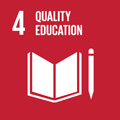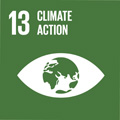- Docente: Beatrice Bertarini
- Credits: 6
- SSD: IUS/05
- Language: English
- Teaching Mode: Traditional lectures
- Campus: Bologna
- Corso: Second cycle degree programme (LM) in Law, Economics and Governance (cod. 5811)
-
from Sep 16, 2024 to Oct 25, 2024
Learning outcomes
At the end of the module, students: - are familiar with the forms and legal disciplines applicable to public intervention in the economy, with regard to relations between State and market, in the European legal order; - know how to apply the relevant legal rules in simple factual situations and how to identify the interaction between various sources of European law, in particular Treaty and directives.
Course contents
Introduction
International contest, international organization (historical view, present rules)
European contest, single market (from 1951 to the present), Law and legal systems
Regulatory framework of specific sectors: organization, european agencies, rules, assessment of market structures and european regulation
Last lectures will be dedicated to the student presentationsReadings/Bibliography
Final List of readings will be distribute at the end of the course.
Michelle Cini & Patryk Czulno (2022) Digital Single Market and the EU Competition Regime: An Explanation of Policy Change, Journal of European Integration, 44:1, 41-57,
Digital Economic Policy: The Economics of Digital Markets from a European Union Perspective, chapeter 1: “A Digital Economy”
Chiti E, Managing the ecological transition of the EU: The European Green Deal as a regulatory process, Common Market Law Review, volume 59, Issue 1, (2022), 19-48 https://doi.org/10.54648/cola2022003
Scott, J. (2011), The multi-level governance of climate change, Carbon & Climate Law Review : CCLR, 5(1), 25-33, https://doi.org/10.21552/CCLR/2011/1/167
Boffo, R., and R. Patalano (2020), “ESG Investing: Practices, Progress and Challenges”, OECD Paris, www.oecd.org/finance/ESG-Investing-Practices-Progress-and-Challenges.pdf
Brühl, Volker, Green Financial Products in the EU — A Critical Review of the Status Quo, Intereconomics; Hamburg Vol. 57, Fasc. 4, (Jul 2022): 252-259.
Teaching methods
Frontal lessons
Assessment methods
50% paper
50% final exam (written)
Evaluation criteria:
18-23: the student has sufficient preparation and analytical skills, spread however, over just few topics taught in the course, the overall jargon is correct
24-27: the student shows and adequate preparation at a technical level with some doubts over the topics. Good, yet not to articulate analytical skills with the use of a correct jargon
28-30: Great knowledge about most of the topics taught in the course, good critical and analytical skills, good usage of the specific jargon
30L: excellent and in depth knowledge of all the topics in the course, excellent critical and analytical skills, excellent usage of specific jargon.
Teaching tools
Power point presentations
Office hours
See the website of Beatrice Bertarini
SDGs


This teaching activity contributes to the achievement of the Sustainable Development Goals of the UN 2030 Agenda.
